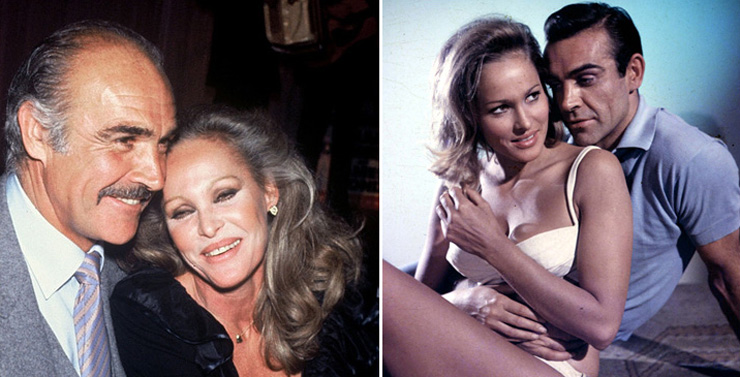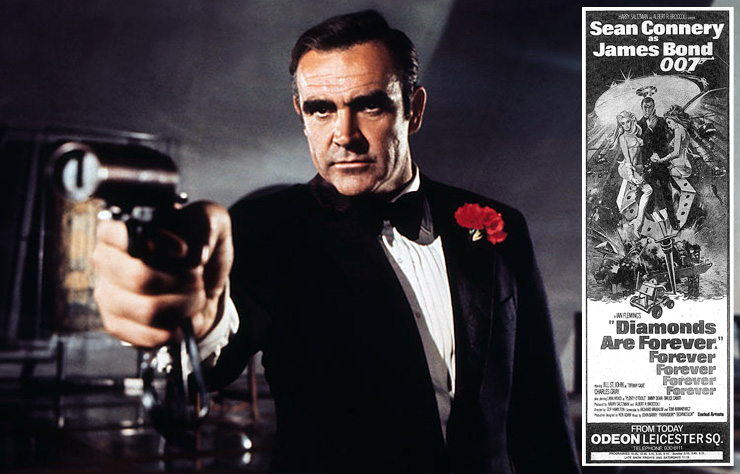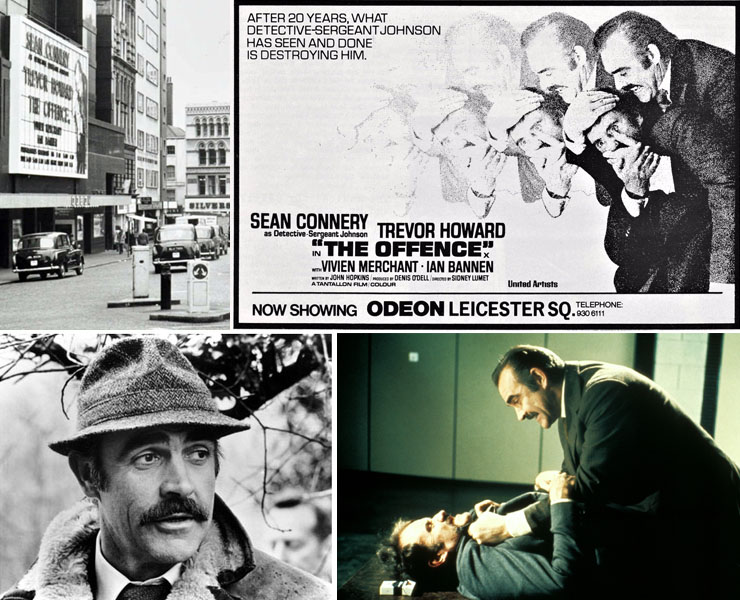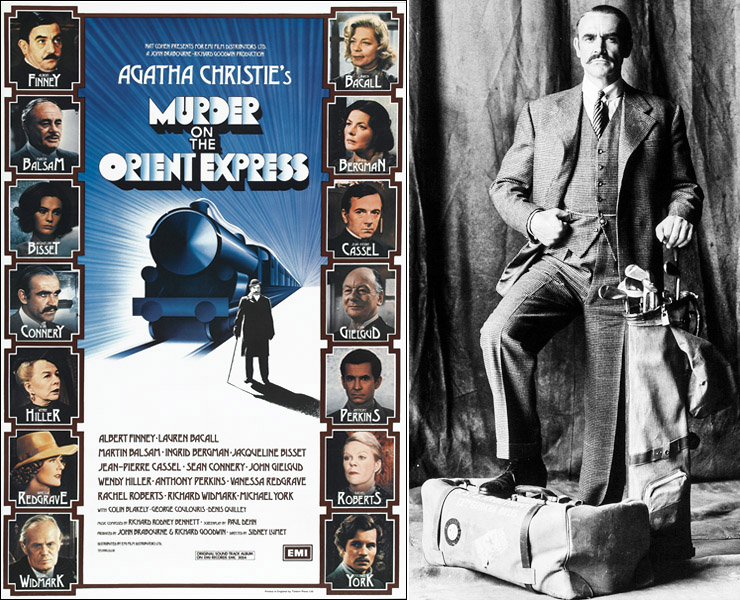JAMES BOND
|
||
|
||
JAMES BOND
|
||
|
||
|
||||
|
Part 3: Back to
Bondage In February 1971 Picker informed the producers that he would authorise the payment of a huge salary to hook Connery. Associate producer Stanley Sopel, a personal friend of the star, was despatched to meet him at the Dorchester hotel in London. Connery’s films had been a very mixed bag since quitting Bond yet he was determined to develop his career in challenging ways, so a return to Bondage would be a step backwards, and perhaps an admission of failure; so the answer was no. |
||||
 |
||||
|
Amazingly, Broccoli & Saltzman next asked Ursula Andress, always Connery’s favourite Bond leading lady, to personally persuade him to change his mind. When that didn’t work, Picker decided to tackle the star himself and flew to London with an unprecedented offer; a staggering basic fee of $1.25-million and a 10% cut of the gross profits. Furthermore, Picker promised Connery that United Artists would financially back, to the tune of one million dollars apiece, any two films of his choosing; to either star in or direct. One of those films turned out to be the gritty police drama The Offence (1972), for which Connery gave one of his best performances; the other project never materialised. This was a deal too good to refuse, though it still took Connery a week before finally accepting, thus earning himself a place in the Guinness Book of World Records as the highest paid actor up to that time. “I was really bribed back into it,” Connery admitted. “But it served my purpose.” In 1970 Connery had joined forces with Scottish industrialist Sir Iain Stewart and racing driver Jackie Stewart to create the Scottish International Educational Trust, a charity that funded artistic individuals and worthwhile projects in Connery’s homeland. To get the foundation moving and in sound financial order Connery donated his entire fee to it from Diamonds Are Forever. American John Gavin was paid off and became the only actor to be signed as James Bond but never actually play him. Connery's return as James Bond was announced in the world press on March 2, 1971 and filming began on Diamonds Are Forever soon after. Released in December 1971, Diamonds Are Forever was a huge international hit, and proved that in the public's mind there was still only one man to play James Bond. United Artists' $1-million gamble had paid off, and in the months leading up to the release of Diamonds Are Forever, they also re-issued three of Sean Connery's earlier Bond films in the UK on double-bills with Clint Eastwood Westerns. The pairings were promoted with the tag-line ‘The One And Only...’, as if to erase the memory of George Lazenby forever. |
||||
|
||||
|
Sean Connery had made it clear this was definitely a one-off return and he took part in little publicity for Diamonds Are Forever, although he did attend the press screening at the ODEON Leicester Square in London on December 29, 1971 bringing Roger Moore as his guest, fuelling press speculation that his friend would be cast as the next James Bond. Connery also later attended the Gala Scottish Premiere of Diamonds Are Forever at the ODEON Theatre, Clerk Street, Edinburgh on Friday January 14, 1972 held in aid of the Scottish International Education Trust. |
||||
 |
||||
|
After finishing work on Diamonds Are Forever, Sean Connery reunited for the third time with American director Sidney Lumet to make the first of the two films to be funded by United Artists as part of his deal to return as 007. In The Offence (1972) Sean Connery starred as police Detective-Sergeant Johnson, who kills suspected child molester Kenneth Baxter (Ian Bannen) whilst under interrogation. Despite United Artists offer to fund a $1-million budget, The Offence was made for just £385,000 in association with Connery's own production company Tantallon Films (a four-man partnership between Connery, his agent Richard Hatton, British film producer Denis O'Dell, and seven time James Bond associate producer Stanley Sopel). The Offence was based on John Hopkins play This Story of Yours which Connery had seen during its original London run in 1968. Hopkins had also co-scripted Thunderball with Richard Maibaum in 1965. Connery bought an option on the screen rights to the play which was filmed under the working title Something Like The Truth (a line which appears in the finished film). Co-starring alongside Trevor Howard and Vivien Merchant, Connery gives a superb multi-layered performance as Johnson, whose mind has been tortured by the things he has witnessed in a 20-year career as a police officer. Despite the outstanding performances by all involved and American Sidney Lumet's nuanced direction of a very English film, The Offence failed to find an audience. In spite of its relatively small budget The Offence did not make a profit for nine years. Released in London on January 11, 1973 The Offence played to a largely empty auditorium at the ODEON Leicester Square, which just twelve months earlier was hosting the record-breaking 12-week engagement of Diamonds Are Forever. Although critically acclaimed at the time of its release, the box-office failure of The Offence caused United Artists to pull out of the deal they had made with Connery, and a planned film version of Macbeth (which Connery was to direct) was shelved after the success of Roman Polanski's 1971 version. |
||||
 |
||||
|
Although The Offence makes for uncomfortable viewing, the performances of Sean Connery and Ian Bannen, which famed director John Huston thought were two of the best he had ever seen in cinema, were the crowning achievements in both actors long careers. Connery was never better, and proved that he was an acting force to be reckoned with, but his next film role was another odd choice when he agreed to star in Zardoz (1974) for director John Boorman. Critically panned, and once again a commercial disappointment, Zardoz has gained a cult following over the intervening years, but it would take another film by Sidney Lumet to restore Connery's status as an international star. Through his friendship with Lumet, Connery was the first actor to be attached to the director's all-star adaptation of Agatha Christie's Murder On The Orient Express. |
||||
 |
||||
|
Starring Albert Finney (1936-2019) as Belgian sleuth Hercule Poirot, Murder On The Orient Express (1974) offered equally weighted roles to each of its cast of Hollywood legends and British stage actors. With the starry cast simply billed alphabetically, Connery more than held his own amongst such formidable company, and the film was a huge financial and critical success. Sean Connery followed the period whodunit with the contemporary thriller Ransom (1974), where he played a Scandinavian head of security. When a gang of hijackers led by Ray Petrie (Ian McShane) seize a British plane, Colonel Tahlvik (Connery) is assigned to rescue the plane and its passengers. But he must also deal with the problems of the British Ambassador, whose residence has been seized by a second group of terrorists. Efficiently made by Finnish director Caspar Wrede, the film was known in the USA as The Terrorists. Sean Connery returned to period adventure for his next three back-to-back hits which propelled him to international stardom in the mid-1970s, with three defining roles which took him as far away from James Bond 007 as one could possibly imagine. |
||||
 |
||||